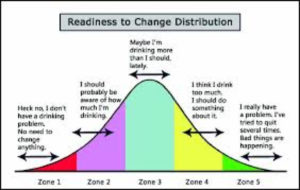
Picture source: Medical Daily
Mr. R is a 65 year old retired teacher whose wife died unexpectedly a year ago. He began drinking a glass of wine nightly to aid his sleep and relax him prior to bed. Mr. R gradually increased his intake, partly due to “boredom” and now typically consumes 3 glasses of wine nightly. He lives alone and usually visits his children in the afternoons, who remain oblivious to his habit.
M is a successful 30 year old investment banker. He often entertains his clients in swanky bars and clubs, usually spending thousands of ringgit on expensive spirits. M goes out celebrating with his colleagues every weekend and drinks copiously, usually consuming half a bottle of expensive whiskey and several pints of beer. Occasionally, he experiences a blackout and is unable to recall the events of the previous night. He is known amongst his colleagues for being a hard worker and even harder ‘party animal’. His last relationship failed as his partner objected to the weekly drinking.

Picture source: News Medical
The above individuals appear completely unrelated, but they have 1 thing in common. Both of them exhibit different types of alcohol misuse. The above examples highlight alcohol misuse among the elderly and binge drinking. Alcohol use disorder remains one of the most prevalent mental health issues globally, yet sadly, only 20% of people with the disorder ever receive treatment for it.
Q: What is binge drinking and why is it a problem?
A: Binge drinking is defined as having more than 5 drinks in a single setting, in about 2 hours, or simply “a plan to drink more than usual and get drunk”. It is emerging as a serious public health problem and is a common abuse pattern. Based on alcohol metabolism, the potential for harm by consuming 6 units in an hour versus 6 units over 6 hours is far greater in the former. The ramifications of binge drinking are steadily emerging in terms of risky sexual health, accidental injuries, violence, damage to property etc.
Q: How do I determine if I or a loved one may have an alcohol use disorder?
A: There are many screening tools that can be found online. One of the most validated ones is the AUDIT (Alcohol Use Disorders Identification test) which is a simple and quick 10 item questionnaire. A score of more than 8 indicates a possible disorder. A link to the questionnaire is provided below
https://www.drugabuse.gov/sites/default/files/files/AUDIT.pdf
Some of the basic questions to ask ourselves would include:
Is alcohol is often taken in larger amounts or over a longer period than I intended?
Is there is a persistent desire or unsuccessful effort to cut down or control my alcohol use?
Do I frequently experience cravings, or a strong urge to use alcohol?
Is my recurrent alcohol use leading to a failure to fulfil other obligations (work/home)?
Q: How do we treat “alcoholism”?
A: The management needs to be tailored to the individual and their specific areas of weaknesses. It is a multidisciplinary treatment and we would firstly ensure that there are no medical complications of alcohol use disorder.

Picture source: Counseling in Birmingham, Alabama
One of the most common treatment strategies is Motivational Interviewing. This is a non-judgemental based therapy where clients facilitate their own recovery. Clients are given exercises to conclude if they have a “problem” or not. Clients are given the autonomy to decide if they are ready for a change in their drinking pattern.
There are pharmacological options that may help reduce cravings if deemed necessary.
Dr Sumeet Kaur (MBBS, M.Psych. Med. (UM)) is a Clinical Psychiatrist and Medical Lecturer at University Sains Islam Malaysia and Hospital Ampang.
[This article belongs to The Malaysian Medical Gazette. Any republication (online or offline) without written permission from The Malaysian Medical Gazette is prohibited.]
